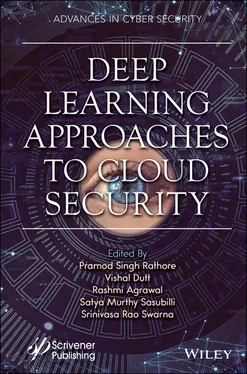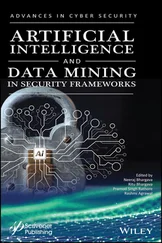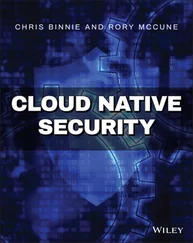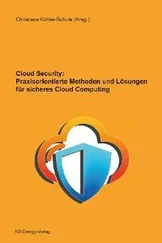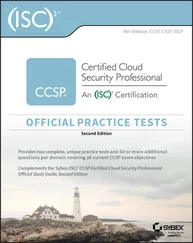1 Chapter 3 Table 3.1 Feature extraction techniques [8]. Table 3.2 Classification techniques.
2 Chapter 6Table 6.1 Classified results of classifiers.Table 6.2 Random forest classification report.Table 6.3 Naïve bayes classification report.Table 6.4 Support vector machine classification report.
3 Chapter 7Table 7.1 Confusion matrix - hold out method.Table 7.2 Confusion matrix - K-fold method.Table 7.3 Evaluation variables.
1 Cover
2 Table of Contents
3 Title Page
4 Copyright
5 Foreword
6 Preface
7 Begin Reading
8 About the Editors
9 Index
10 End User License Agreement
1 v
2 ii
3 iii
4 iv
5 xv
6 xvi
7 xvii
8 xviii
9 xix
10 xx
11 1
12 2
13 3
14 4
15 5
16 6
17 7
18 8
19 9
20 10
21 11
22 12
23 13
24 14
25 15
26 16
27 17
28 18
29 19
30 20
31 21
32 22
33 23
34 24
35 25
36 26
37 27
38 28
39 29
40 30
41 31
42 32
43 33
44 34
45 35
46 36
47 37
48 38
49 39
50 40
51 41
52 42
53 43
54 44
55 45
56 46
57 47
58 48
59 49
60 50
61 51
62 52
63 53
64 54
65 55
66 56
67 57
68 58
69 59
70 60
71 61
72 63
73 64
74 65
75 66
76 67
77 68
78 69
79 70
80 71
81 72
82 73
83 74
84 75
85 76
86 77
87 78
88 79
89 80
90 81
91 82
92 83
93 84
94 85
95 86
96 87
97 88
98 89
99 90
100 91
101 92
102 93
103 94
104 95
105 96
106 97
107 98
108 99
109 100
110 101
111 102
112 103
113 104
114 105
115 106
116 107
117 108
118 109
119 110
120 111
121 112
122 113
123 114
124 115
125 116
126 117
127 118
128 119
129 120
130 121
131 122
132 123
133 124
134 125
135 126
136 127
137 128
138 129
139 130
140 131
141 132
142 133
143 134
144 135
145 136
146 137
147 138
148 139
149 140
150 141
151 142
152 143
153 144
154 145
155 146
156 147
157 148
158 149
159 150
160 151
161 152
162 153
163 154
164 155
165 156
166 157
167 158
168 159
169 160
170 161
171 162
172 163
173 164
174 165
175 166
176 167
177 168
178 169
179 170
180 171
181 172
182 173
183 174
184 175
185 176
186 177
187 178
188 179
189 180
190 181
191 182
192 183
193 184
194 185
195 186
196 187
197 189
198 190
199 191
200 192
201 193
202 194
203 195
204 196
205 197
206 198
207 199
208 200
209 201
210 202
211 203
212 204
213 205
214 207
215 208
216 209
217 210
218 211
219 212
220 213
221 214
222 215
223 216
224 217
225 218
226 219
227 220
228 221
229 222
230 223
231 224
232 225
233 226
234 227
235 228
236 229
237 230
238 231
239 232
240 233
241 234
242 235
243 236
244 237
245 238
246 239
247 240
248 241
249 242
250 243
251 244
252 245
253 246
254 247
255 248
256 249
257 250
258 251
259 252
260 253
261 254
262 255
263 256
264 257
265 258
266 259
267 260
268 261
269 263
270 264
271 265
272 266
273 267
274 268
275 269
276 270
277 271
278 272
279 273
280 275
281 276
282 277
Scrivener Publishing100 Cummings Center, Suite 541J Beverly, MA 01915-6106
Advances in Cyber Security
Series Editors: Rashmi Agrawal and D. Ganesh Gopal
Scope:purpose of this book series is to present books that are specifically designed to address the critical security challenges in today's computing world including cloud and mobile environments and to discuss mechanisms for defending against those attacks by using classical and modern approaches of cryptography, blockchain and other defense mechanisms. The book series presents some of the state-of-the-art research work in the field of blockchain, cryptography and security in computing and communications. It is a valuable source of knowledge for researchers, engineers, practitioners, graduates, and doctoral students who are working in the field of blockchain, cryptography, network security, and security and privacy issues in the Internet of Things (IoT). It will also be useful for faculty members of graduate schools and universities. The book series provides a comprehensive look at the various facets of cloud security: infrastructure, network, services, compliance and users. It will provide real-world case studies to articulate the real and perceived risks and challenges in deploying and managing services in a cloud infrastructure from a security perspective. The book series will serve as a platform for books dealing with security concerns of decentralized applications (DApps) and smart contracts that operate on an open blockchain. The book series will be a comprehensive and up-to-date reference on information security and assurance. Bringing together the knowledge, skills, techniques, and tools required of IT security professionals, it facilitates the up-to-date understanding required to stay one step ahead of evolving threats, standards, and regulations.
Publishers at Scrivener
Martin Scrivener ( martin@scrivenerpublishing.com) Phillip Carmical ( pcarmical@scrivenerpublishing.com)
Deep Learning Approaches to Cloud Security
Edited by
Pramod Singh Rathore
Vishal Dutt
Rashmi Agrawal
Satya Murthy Sasubilli
and
Srinivasa Rao Swarna

This edition first published 2022 by John Wiley & Sons, Inc., 111 River Street, Hoboken, NJ 07030, USA and Scrivener Publishing LLC, 100 Cummings Center, Suite 541J, Beverly, MA 01915, USA
© 2022 Scrivener Publishing LLC
For more information about Scrivener publications please visit www.scrivenerpublishing.com.
All rights reserved. No part of this publication may be reproduced, stored in a retrieval system, or transmitted, in any form or by any means, electronic, mechanical, photocopying, recording, or otherwise, except as permitted by law. Advice on how to obtain permission to reuse material from this title is available at http://www.wiley.com/go/permissions.
Wiley Global Headquarters
111 River Street, Hoboken, NJ 07030, USA
For details of our global editorial offices, customer services, and more information about Wiley products visit us at www.wiley.com.
Limit of Liability/Disclaimer of Warranty
Читать дальше
